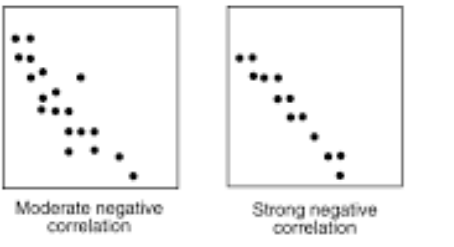The scatter plot below shows the relationship between the student’s exam scores and the students’ heights. Which of the following types of correlation is shown on the scatter plot?
A. Positive
B. Positive and negative
C. Negative
D. No correlation
correlations fall into positive, negative, and no correlation. A positive correlation shows that an increase in one variable increase results in an increase on the other variable increases as shown.

A negative correlation scatter plot shows that an increase in one variable results in a decrease on the other one.

The no-correlation scatter plot demonstrates that there is no response between variables. A change in one variable has no effect on the other variable.

Looking at the provided scatter plot, the heights of the students does not have any relationship on the students’ scores. Thus, the type of correlation is no correlation.
Therefore, the Correct Answer is D.

 55=43/55
55=43/55
